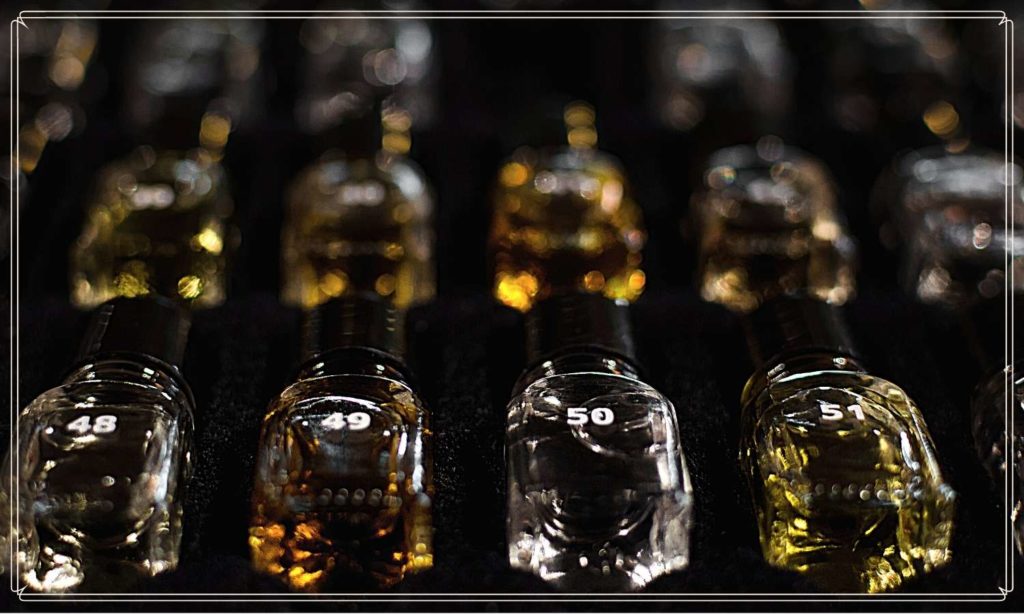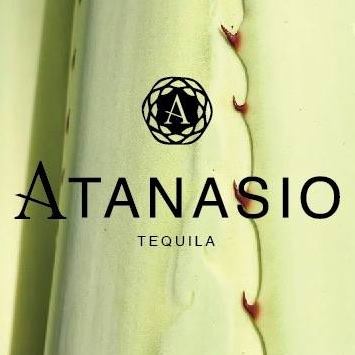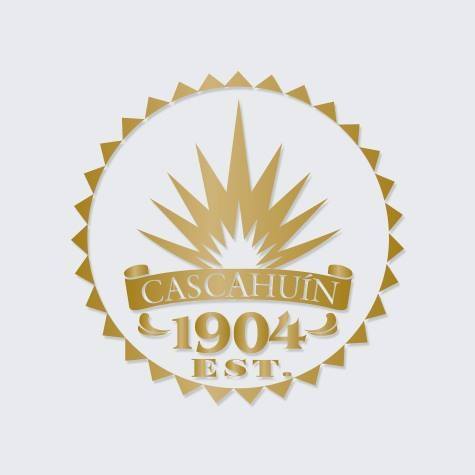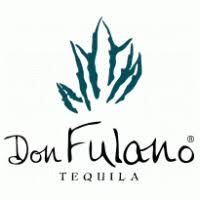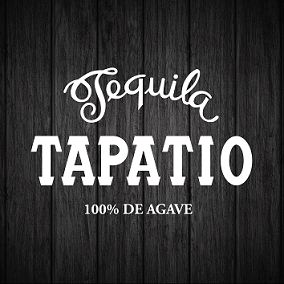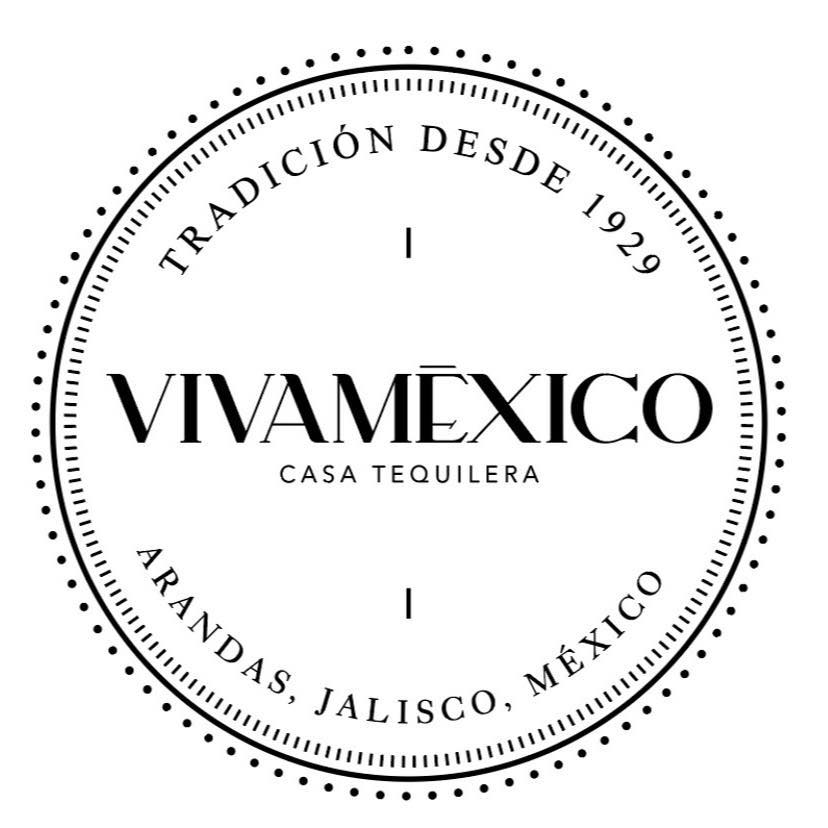When talking about additives, we talk about the process of adding something in small amounts to tequila just before bottling to enhance its flavor, aroma and color. Producers use additives to make new batches to be more consistent with earlier batches, reducing or eliminating the natural difference between them. Not everyone is aware, but as tequila is an agricultural product, there is a natural variation of flavors, aromas and colors of tequilas from different batches. Some producers however – typically larger ones – cannot afford to have such natural “inconsistency” in their product line so this is why additives are used in the first place.
The tequila industry applies two different groups of additives for three different purposes:
Mellowing additives (undisclosed): The purpose for these additives is to allow producers to make their tequila “softer” and more appealing to consumers. These can be applied to aged tequilas but not for blanco. These are “natural” additives.
Flavoring Additives (disclosed): These additives are designed to change or alter the flavors, aromas and/or color of the tequila. Coffee, chocolate, fruit flavored tequilas and other liqueurs containing tequila have these additives. These can be “natural” or artificial additives.
Flavoring Additives (undisclosed): These additives are designed to be used in extremely small quantities to artificially enhance the flavor of an otherwise naturally produced tequila. These can be “natural” or artificial additives.
Mellowing Additives – Undisclosed
Let’s start by discussing the mellowing additives, which were the first additives legally allowed in tequila. Mellowing is referred to as abocar in Spanish and is the addition of caramel coloring, natural oak extract, glycerin and sugar syrup.

Not a well known fact, but cognac producers can also apply three out of the four mellowing additives. From the above, only glycerin is not allowed to be added to cognac. The Tequila legislation clearly allows only natural oak extracts for mellowing purposes and all the other additives can either be found in nature (caramel, oak, sugar) or in the tequila after a natural process (glycerin). Mellowing additives can only be added to joven, reposado, añejo and extra añejo tequilas but NOT to blanco tequila. The industry started to limit the quantity from 1994, and there is a huge confusion in consumers and even producers who don’t use additives in their products – just how much of these additives are allowed?
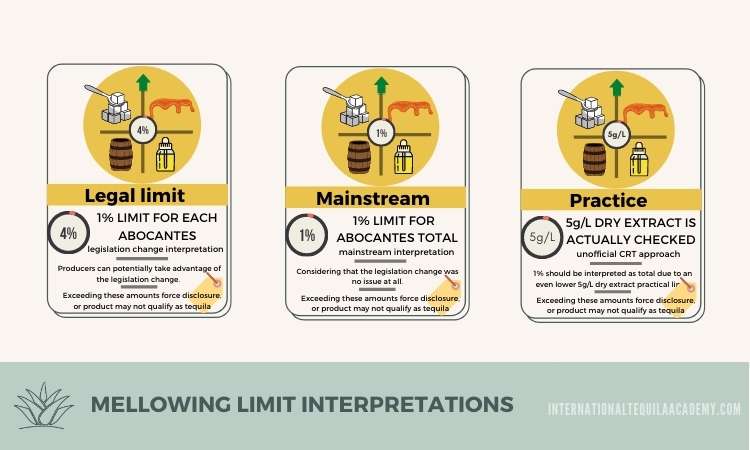
Initially in 1994 the relevant NOM was clear in that a maximum of 1% of the total mix of the 4 mellowing additives are allowed. However there was a “sneaky” change of wording in the legislation in 1997, which has seemingly gone unnoticed as I have only ever seen people quoting a limit of the initial 1% of the total volume. Due to this significant change in 1997, the legal limit is 1% of each of the 4 additives making it a total of 4%. (please read our detailed legal references below for more info) Now this sounds a lot scarier than the 1% total limit (4 times scarier actually) and this was a clearly controversial change as literally the norma says that even a tequila with 96% original agave/water/yeast related content and 4% mellowing additives part can qualify as 100% agave tequila without any legal liability to disclose this. If this statement makes your head spin around, please check the legislation change roadmap below reviewing the sections from legislation to legislation. Warning: your head may be spinning around even more after reading it. And we do have a second opinion too, that it is even better to interpret the limit as 5g/L dry extract since that is what is actually checked by the CRT. You can read it here.
Flavoring Additives – Disclosed
So now let’s talk about the other group of additives that consumers should be even more concerned about – the flavoring additives. The tequila legislation under section 6.1.1.1 allows the addition of sweeteners, colorants, aromas and flavors.
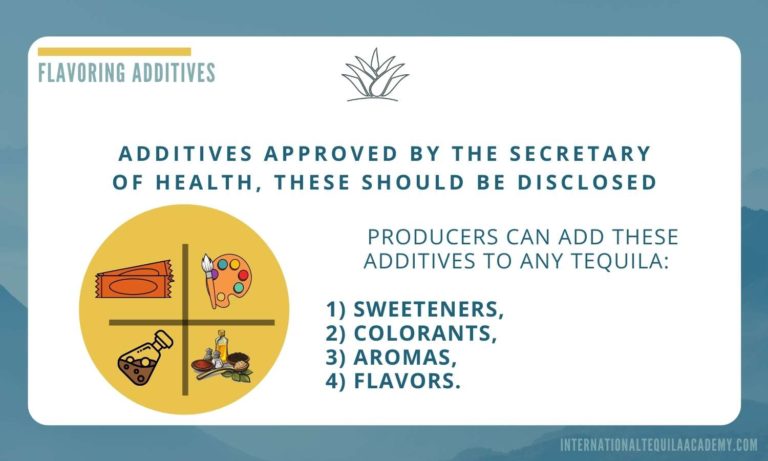
The only qualifying criteria is that it has to be approved by the Secretary of Health department. Now why are these additives a huge issue? These additives are no longer necessarily natural, and they basically rewrite the flavor of any tequila. Many connoisseurs do not even consider these to be tequilas at all, even though they do qualify legally.
So let’s see what the limitations are for flavoring additives. The legislation states that a maximum of 85g/L dry extract and a maximum of 75g/L sugar can be added to the product to still qualify as tequila. This translates to 16% of the total quantity. These are however not strict limitations. As our educator friend Jaime Augusto Villalobos Díaz pointed out – the sugar limit is defined as “reducing sugar” (ART), this could allow a slightly higher added sugar or sugar solution limit than the 75g/L. Also, most additives do not come in a dry extract form, so the 85g/L limit is also not very restrictive, more can be added in its liquid solution. As stated earlier, producers can literally rewrite the flavor of a tequila entirely, however it does have to come with full disclosure.
Legally speaking when a producer adds any of the above flavoring additives, they need to present the added aromas colorants and flavors on their label as per section 6.1.1.1 in conjunction with section 11.1 c). So if you see coffee, mango, strawberry, spearmint, chocolate, jamaica etc. on the label with the term “infused”, it is a properly disclosed tequila with added flavors. An interesting addition by our friend José Gomez is that a recently popular “flavoring” additive Cannabis was only approved for medicinal purposes, not for “leisure”. This means that producers can only use it as a flavor without its CBD or THC components.
Flavoring Additives – Not Disclosed
The biggest issue is the apparent non-disclosure of added (artificial) aromas and flavors. Some producers are known to disregard the fact that they are liable to disclose the added flavoring additives they use. The point is, that it is easier and cheaper to produce a blend, almost flavorless tequila and add instead of creating a naturally complex, aromatic one. While the CRT do incredible amounts of checks, especially for methanol, sulphur, heavy metals, natural aromas etc, according to Section 3 of the current norma, there is no specific checks for artificial sweeteners, aromas and flavors. This actually makes any tequila to potentially have any kinds of additives within them without disclosing what was added. Producers send their samples in for analysis to the CRT and if they don’t check for the particular additive the producer was using, it will get a green light. There are additives that even in extremely small amounts can have a huge effect on the flavor of a tequila and they can be subtle, almost undetectable. The most usual non-disclosed additives are sweeteners, vanilla, artificial agave aromas. According to a chat we had with our CRT contact (unofficially), it is the responsibility of the brands to disclose the aromas they are using.
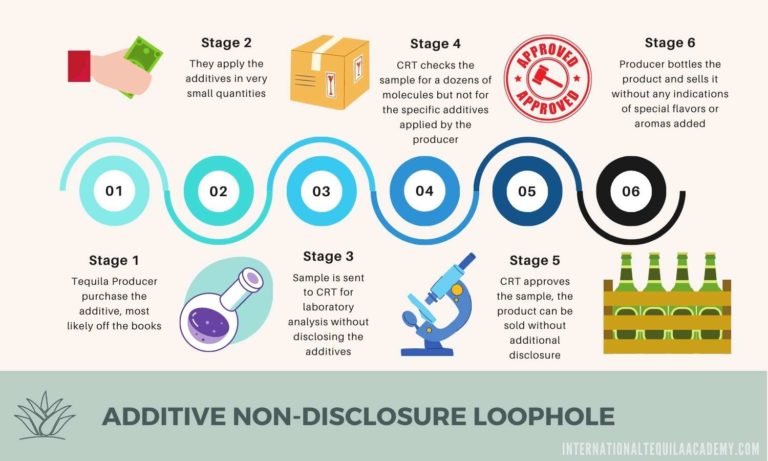
Some consumers (our journalist friends Grover and Scarlet from Taste Tequila) got so fed up by the lack of additive disclosure that they started their own civil initiative – the Verified Additive Free program. You can also check out our friend Lou Agave’s Long Island Lou Tequila page, he is very outspoken in his reviews when it comes to additives. On the other hand, there are over 2000 tequila brands and only a fraction of them will ever get evaluated by the aforementioned veteran tequila bloggers. So if these hidden additives make you angry too, and you’d find it cool if you could judge tequilas yourself, we offer several online courses to build up your knowledge so that you can learn how to evaluate tequilas and spot additives. Also, we would like to invite you to try and drink more craft tequilas – we are happy to recommend our tequila producer friends’ products, as they don’t add any additives to them. Why? They have no reason to manipulate the naturally beautiful flavor of the agave.
Mellowing additives legislation change roadmap from 1% to 4%
1994 (DOF 30/08/1994) Section 4.1 – ” La mezcla de éstos no debe rebasar el 1% de peso” which translates to “the mix of these (mellowing additives) cannot be more than 1% of the weight.”
1997 (DOF 03/09/1997) Section 4.1: “El uso de cualquiera de estos ingredientes no debe ser mayor del 1% en relación al peso total que tiene el tequila, antes de su envasado” which translates to “The use of any of the these ingredients must not be more than 1% in relation to the total Tequila weight before it is bottled.” The wording has clearly changed to be more allowing. The use of the new wording allows for a 1% each up to a total of 4% of total quantity mellowing additives without disclosure.
2005 (DOF 06/01/2006) Section ???? – the separate quantity limit for abocados seemingly disappears from the NOM (please let us know if you were able to find it)
2012 (DOF 13/12/2012) Section 6.1.1.1: “el uso de cualquiera de los abocantes a que se refiere el punto 4.1 de la presente norma no debe ser mayor del 1% en relación al peso total que tiene el tequila antes de su envasado” which translates to “The use of any of the mellowing additives to which section 4.1 of this NOM refers must not be more than 1% in relation to the total Tequila weight before it is bottled.” There is a slight change to the wording, contributing to the fact that they moved the limitations to a different section(from 4.1 to 6.1.1.1).
You can access the above normas and check the relevant sections by clicking on the blue links. Also, there is a courtesy translation by the CRT that for the newest 2012 regulation you can find here. While it does not substitute the Spanish text, this comes from the CRT at least.
Drink More Craft Tequila
We owe a lot to our tequila producer friends, and we believe they make some of the best tequilas in the world. You can click on the brand icons to navigate to their website or click here to get access to our special deep interviews we made with their producers. By purchasing their tequila, you can support a small, independent local business as well as the real traditions of producing tequila.
Here you can check out our other articles about additives if you want to learn more:
7 misconceptions you didn’t know about the additives in tequila
Feel free to leave your comment or feedback – let us know what you think!

